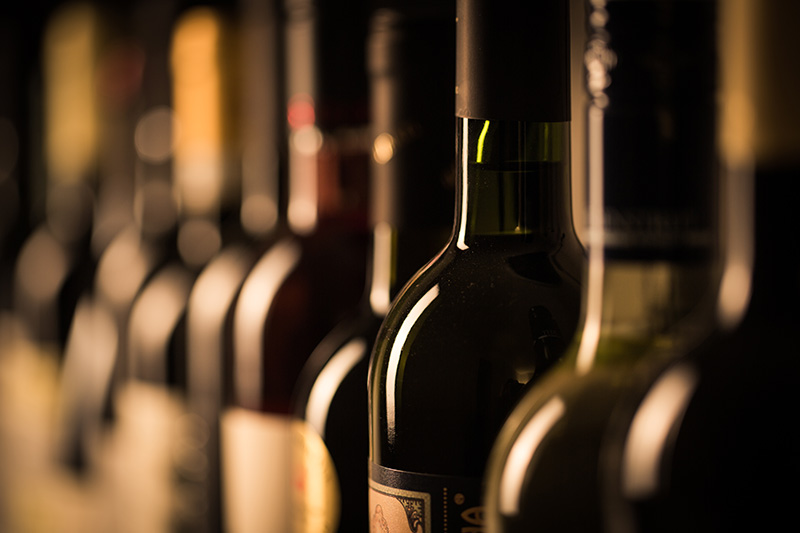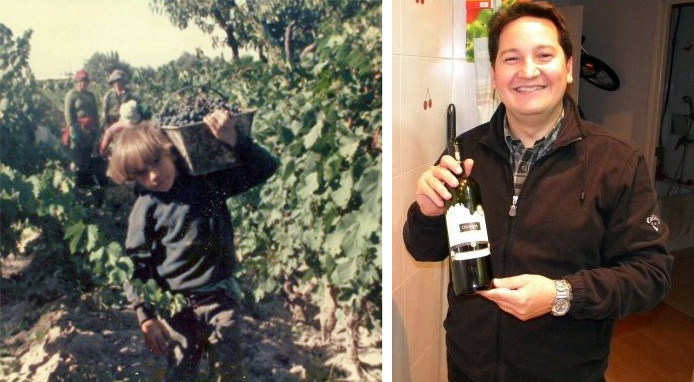- Apply
- Visit
- Request Info
- Give
‘A product for the masses’
Emiliano Villanueva explains the rise of wine
Written by Michael Rouleau
Published on February 08, 2022

Wine runs deep for Emiliano Villanueva. The son of two generations of Italian winemakers, Villanueva grew up in Mendoza, Argentina — the wine capital of South America — where he spent summers harvesting grapes and tending the family vineyards. He managed wineries in Spain and Argentina and even lived in France where he obtained a master’s degree in the world’s first wine-related MBA program from the International Organization of Vine and Wine (OIV).

The wine scholar and aficionado joined Eastern Connecticut State University in 2013 following the completion of his Ph.D. dissertation in Wine International Business History at the University of Barcelona. As a professor and chair of the Department of Management and Marketing, the global wine industry remains Villanueva’s primary research focus.
“Wine is history, geography and culture. Wine is art and tourism… tradition and innovation... It is a part of my family background and personal history,” said Villanueva. “Wine is aromas and flavors, a healthy drink that invites a good conversation.”
One of Villanueva’s primary research interests is the shifting patterns in global wine production and consumption. In addition to being concentrated in western Europe for most of history, he explains, “Wine was once considered an elite product.” However, Villanueva’s research shows that “the profile of the wine consumer has been changing in the past 50 years from being an elite product consumed by the rich and powerful to, nowadays, a product for everyone.”
Villanueva has identified three revolutions in the wine industry that align with three waves of globalization. The first wave, throughout the 19th century and until World War II, is characterized by the spread of vineyards from Europe to the world, with the emergence of new wine-growing regions in the “New World,” including European settlements in Australia, Argentina, Chile, New Zealand, South Africa and the United States. The second wave, from World War II to the late 20th century, is characterized by the addition of new consumers from across the world, a wine marketing revolution led by the Californian wine industry, and a boom in worldwide wine exports.
The third wave, beginning in the 21st century to present day, is characterized by a “truly global industry with new consumers both at the lower and higher end of the value scale, and additional producing regions and countries entering the scene,” said Villanueva. “Major drivers of this transformation come from innovations in distribution and logistics, making wine an affordable and accessible product for the masses.

1.) Villanueva in 1981 harvesting grapes on the family vineyard in Mendoza, Argentina. 2.) Villanueva in 2005 holding a bottle of the family wine.
As the wine industry continues to transcend the Old-World dominance of France, Italy and Spain, Villanueva sees a convergence of worldwide wine consumption and winemaking, as well as a convergence in wine business and marketing. He presented (virtually) on the global transformation of the wine industry this past January at the Eurasia Business and Economics Society (EBES) conference in Warsaw, Poland.
Villanueva’s research finds that western European production has been on the decline from its 1980 high of approximately 24 million kiloliters to approximately 15 million kiloliters in recent years. Conversely, New World production has steadily gained market share since the 1930s, growing from approximately 1 million kiloliters annually to almost 10 million kiloliters today.
Western Europe’s production decline beginning in the ‘80s coincides with the New World’s growth in wine exports, from near zero in 1980 to almost 4 million kiloliters in 2015 — almost 30 percent of the global market share. There has also been a global convergence in wine consumption, with the New World presently consuming nearly as much wine by volume as western Europe — though western Europe still leads in consumption per capita.
According to Villanueva, the United States is now the largest wine-consuming country in the world by volume. “The profile has changed from older, educated males to a more democratic profile that includes women and younger generations… a more homogenous profile representing the real population of the United States.”
“Wine is well on its way to becoming engrained in American culture”, according to Villanueva, much like it is in Mediterranean Europe. In these countries, wine has “a vast presence in everyday life and is symbolic of culture, history and even religion.”


